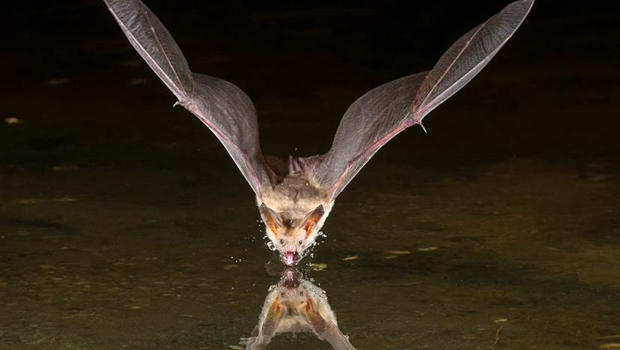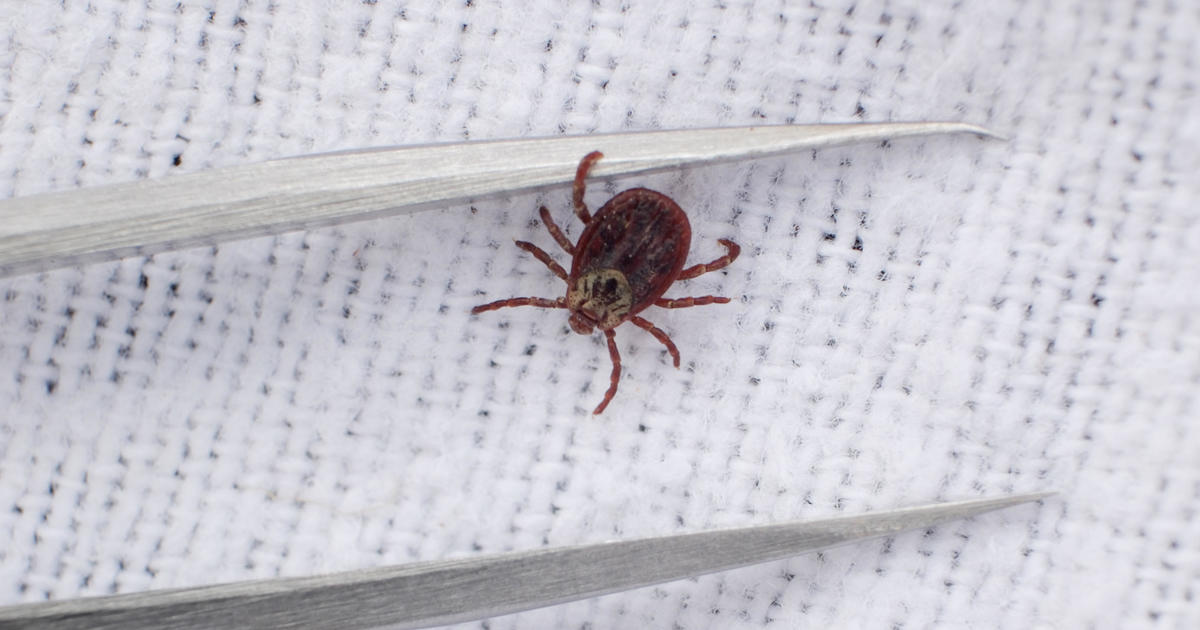Nature up close: Bats, misunderstood but valuable
By "Sunday Morning" contributing videographer Judy Lehmberg.
I had never touched a living animal that was as cold as the hibernating bat I found while working on my master's thesis. It made we want to stick her in a nice, warm jacket pocket. But that is the last thing you should do to a hibernating bat. It would then warm up, which requires a great expenditure of energy. Not all bats hibernate, but the ones that do can lower their body temperature to just a few degrees above freezing, their heart rate to as low as 20 beats/minute from a non-hibernating 600 beats/minute.
I'm not sure why bats have such bad PR or how they became one of the major symbols for Halloween. In some countries, such as China, they are considered good luck, and they are good luck for farmers and gardeners everywhere, as insect-eating bats make up about three-fourths of the over 1,100 bat species.
The most common bat in the U.S., the little brown bat, can eat over 1,000 mosquitoes an hour. The largest colony of bats in the world, the Mexican free-tailed bats in Braken Bat Cave near San Antonio, Texas, eat tons of insects every night, including corn earworm moths. Eating this crop pest saves farmers an estimated $4 billion a year in reduced pesticide use and crop damage.
Bats are also blamed for carrying rabies, and some of them do, but only .05% of the bats in the U.S. have rabies, and the average number of human deaths per year due to rabid bats is one. Toasters and bathtubs are much more dangerous than bats!
Years ago in the comic strip "Tumbleweeds," Limpid Lizard gave the love of his life, Little Pigeon, a cage with a bat hanging from the top. Limpid Lizard said, "That's not a bat, it's a moused bird." Of course he was wrong, but bats are the only mammals capable of true flight. Birds have many adaptations that make flight possible, including hollow bones, feathers, no teeth, reduced tail bones, no fingers, specialized lungs, and a centrally-located gizzard. Bats aren't as well-adapted for flight as birds, but they do fly. Their major adaptation is long, thin finger bones with an attached membrane that collectively forms a wing. They do at night what some birds do during the day; Most of them eat insects, but there are also bats who eat nectar, pollen, fruit, fish, frogs and, of course, blood.
The following are some species that exemplify the diversity in the bat world.
Epauletted fruit bat – An African species that -- as its name implies -- eats fruit. Notice the cute face, large eyes and no ear tragus. Their echolocation is not very good, but then fruit doesn't usually try to escape.
Western pipistrelle – A small bat common in the southwest. Look at the bat's face and you know it is a great insect predator. Most bats, including the pipistrelle, use echolocation (a type of radar) to find flying insects. A bat emits very high pitched-sounds that bounce off insects which are then caught by the bat. They use nose appendages and the tragus in their ear to help gather the sounds. In general, the cuter their face, the worse their echolocation abilities. Ugly bat = great echolocation. The Western pipistrelle is an accomplished insect catcher.
Mexican long-nosed bat – A nectar-feeding bat with poor echolocation. Nectar-feeding bats are essential for some plant pollination. The first time we ever saw one was at our hummingbird feeder in southern Arizona. Bats are much clumsier than hummingbirds, and just after dark we heard the noise of something banging into the feeder. It was a pregnant long-nosed bat. It didn't take her long to empty the feeder, but most of the sugar water ended up on the ground, because she kept hitting the feeder.
Pallid bat – An unusual bat in that it catches most of its prey, including scorpions, centipedes, millipedes and insects, on the ground. They can hear potential victims scuttling along the ground and actually land before attacking their victim. They appear to be immune to scorpion venom.
Judy Lehmberg is a former college biology teacher who now shoots nature videos.
For more info:
- Judy Lehmberg (Official site)
- Judy Lehmberg's YouTube Channel
To watch extended "Sunday Morning" Nature videos click here!





